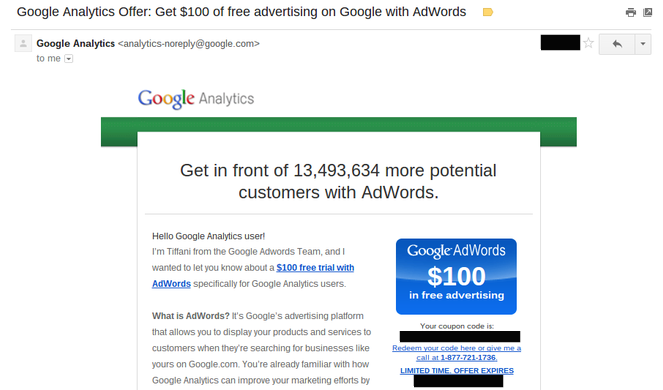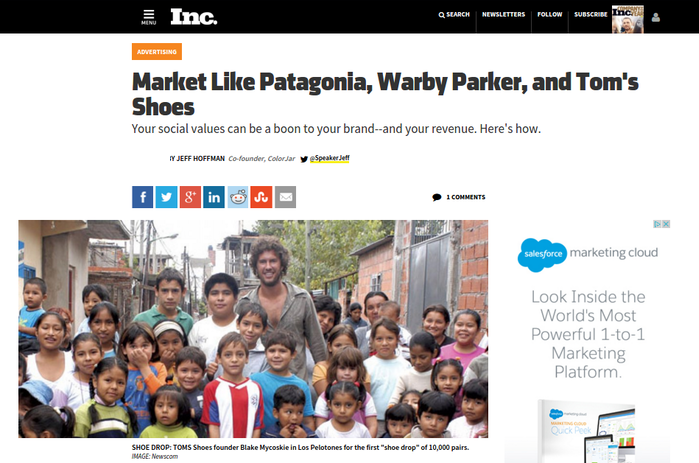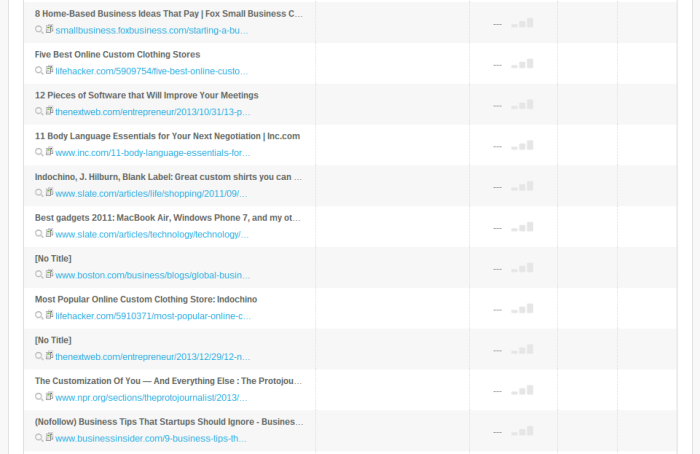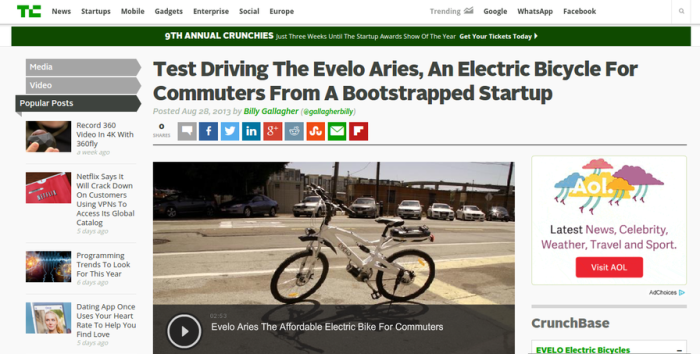PR for Ecommerce: 4 Newsworthy Ideas
Years ago, a surprise hit my inbox. Google Analytics gifted me $100 in AdWords credit with the promise that I now had the opportunity to get in front of 13 million potential customers. As a college student living off of a tight budget $100 worth of anything made me feel like I had won the Powerball (sad side note: the recent $1 billion dollar jackpot has now been claimed folks). Having just launched my first Ecommerce business, this was sublime timing. So, I invested Google’s $100 AdWords credit towards pay-per-click ads on targeted search queries. Within a few days, my credit was exhausted and a quick look at our internal analytics showed a paltry number of conversions. Actually, that number was zero.
As quick as my fortune came, it went. But I had a gambler’s attitude and I dipped into my monthly budget (e.g. my lunch money), pulling out $100 which I’d wager on another bet towards Google Adwords. This time though, I did things different. I researched how to create the perfect AdWords ad and learned about A/B testing. Yet, that wasn’t enough and before the week was over, I knew I’d be eating cup noodles for the remainder of the month.
Frustrated but not defeated, I knew that I couldn’t afford to experiment with paid advertising anymore. Instead, I stumbled upon the idea of inbound marketing and public relations (PR). From there, I was convinced that I could market our business without having to spend any real money on ads. Fortunately, I proved that hypothesis right. Within the first month of launch, I earned us modest coverage in a few local blogs. The publicity wasn’t game-changing for our business but it was a move in the right direction. By month six or so, we were featured in an article in The New York Times. Website traffic shot up 4000% overnight and, that week, we generated six-figures in sales.
Public relations was the perfect marketing channel for our bootstrapped Ecommerce startup. For other brands, it serves a variety of purposes such as boosting sales, increasing brand awareness and influencing brand perception. And though it may seem daunting to step in front of the media and promote yourself, it is easy as long as you believe in your mission and product.
To help you craft newsworthy stories, here are four tips:
Align your brand with an emerging trend and position yourself as an industry authority
It is easy to dominate an industry when you are the only player. Unfortunately, that rarely makes the headlines. Rather, what gets bloggers and journalists excited is covering emerging trends and the companies pioneering a new way of shopping. For example, Warby Parker has been credited for disrupting the eyewear industry with its innovative approach to direct-to-consumer pricing and its buy-one-give-one approach to charity. But instead of aligning itself with other eyewear companies (and unnecessarily giving them free publicity), Warby Parker likened itself to TOMS, the social-conscious business that gives away a pair of shoes every time a customer purchases a pair.
When flash sales first became popular, Groupon and Gilt stood at the forefront. A new story on the daily deals industry felt incomplete without mention of one or both of these companies. In their heyday, ShoeDazzle and BeachMint were the only companies worth talking about within the product subscription industry. Since then, both have faced a less than favorable fate and now brands such as BirchBox, Dollar Shave Club and Naturebox are the most popular examples of successful subscription-based businesses.
When you do manage to get a few journalists calling your brand one of the market leaders pioneering a new trend, you begin to benefit from what internet marketing expert Ken McGaffin calls the “Cascade Effect.” He explains, “Journalists will often quote, comment or enlarge upon other journalist’s work. Bloggers are also constantly citing other stories. So if you get your story covered in one prominent media outlet, you’ll quickly see a cascade of similar stories and links spring up. You’ll get links you never even asked for.”
In PR, one of the most powerful things you can do is help a handful of influential reporters understand how your business either contributes to or impacts an industry. That way, they begin to permanently associate you with a specific trend and others will adopt that same thinking too.
Be friendly with journalists that have covered you and your competitors
As your brand accumulates press mentions, you should develop an extensive media list which includes the names, email addresses, Twitter handles, and LinkedIn profiles of the writers who have referenced you in their work. But your efforts shouldn’t stop there. Journalists who have covered you in the past are more likely to write about you again in the future. Therefore, companies should aim to build friendly relationships with bloggers and reporters who are already familiar with their brand.
Add value to each relationship by regularly sharing information that can help them better understand your business and industry. Share contacts to sources they may want to interview later. Essentially, the more you help them do their job, the more they will reciprocate by using you as a source in their stories.
Ecommerce stores should also conduct research on writers who have mentioned competitors in the past. Though some bloggers may be partial to the first brand they contact in a certain niche, others welcome getting to know additional sources who can share unique data and opinions on what’s happening in an industry.
To retroactively discover who has written about you or a competitor in the past, review your backlinks to find past press mentions and analyze who has linked to your competitors before. Of course, an in-depth search through Google can help you surface tons of news stories referencing you or other stores in your niche. Alternatively, you may check out a competitor’s press page to find direct links to articles mentioning them.
Send just enough swag
A brief description of your product or service over email might not be enough to get someone excited about your business. Visual content such as images and video can help but only so much. To truly catch a writer’s attention, send them sample or review product so they can see how awesome your offerings are in-person.
For Ecommerce brands, product reviews are a straightforward way of earning media coverage. And while many journalists may have a different angle in mind for their upcoming stories, they will still enjoy testing out your product anyways. Just be mindful that this approach to PR can get expensive. Giving away product without a guarantee of coverage can eat into your marketing budget. Two-way shipping on loaner product can be costly too. Avoid going overboard as well because some journalists dislike when brands make seemingly blatant attempts to bribe them for favorable coverage with thousands of dollars worth of product and swag. To limit any conflict of interest, you can ship product out with a pre-paid return label, allowing writers to try out your product for a few days or weeks before having to send it back.
Start with a grassroots approach to PR
One of the earliest PR emails I ever sent was to a reporter at The Wall Street Journal. It was three sentences long and incredibly vague. This was deliberate. I had hoped that my brief message was respectful of their time. The expectation was that if they were interested in learning more, they would click the one link I shared pointing to our website. Looking back at it, I fully understand why I never received a response. The copy surrounding the link couldn’t possibly pique a person’s curiosity. At the time though, I was convinced it was all I needed to initiate a conversation and eventually get my face onto the front page of the national newspaper. For a while, that was my approach. I sent a countless number of boring emails to writers who shared their email address publicly. Weeks later, without any results to show from my efforts, I revised my strategy. Instead of pitching popular journalists, I emailed or tweeted at small-time fashion and lifestyle bloggers about our custom clothing company. That day, I received my first-ever reply from a writer. Later that week, he mentioned us in a blog post. I researched and contacted hundreds of other part-time bloggers over the next few months until we had received dozens of mentions from sites that sent us anywhere from one to 100 visits.
It was hardly a profitable or scalable strategy but as a determined and budget-constrained marketer, I knew this was the only way I’d be able to develop my PR skills and hone our brand’s message. With each email response I received, I discovered which aspects about our business truly resonated with audiences. Over time, I learned to craft what seemed to be the perfect PR pitch for our company and for the type of writer we targeted. Finally, I was able to effectively communicate the most newsworthy parts of our story.
Using our refined pitch, I moved upmarket with my PR campaign, focusing less on small-time bloggers and more on writers at medium-sized publications. Soon, every earned press mention drove hundred of visits each and a handful of sales. As our PR strategy matured, I set my sights on mass media journalists — and it worked. Over the years, we have received coverage in The New York Times, Inc. Magazine, Mashable, Forbes, and hundreds of other noteworthy publications.
I learned how to do PR through trial-and-error. By starting with a grassroots approach to PR, you can easily develop the confidence and know-how needed to gain positive press. Without any formal training, I used the momentum I had from earning modest media mentions to generate favorable coverage in increasingly larger publications and news sites. By starting small, you too can snowball your success and build a venerable brand that attracts customers and journalists looking for a great story.





